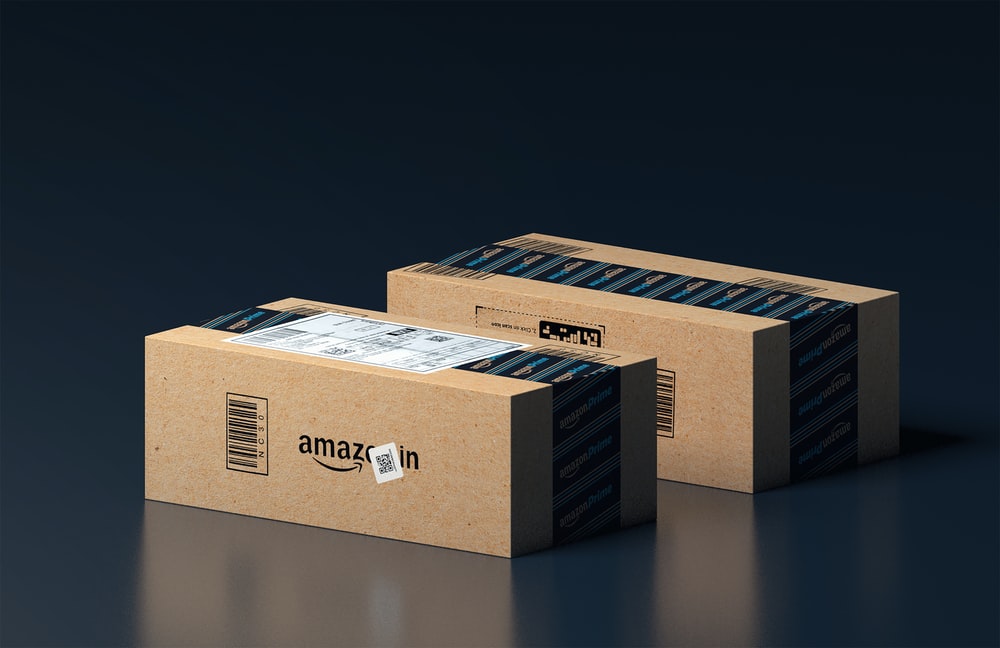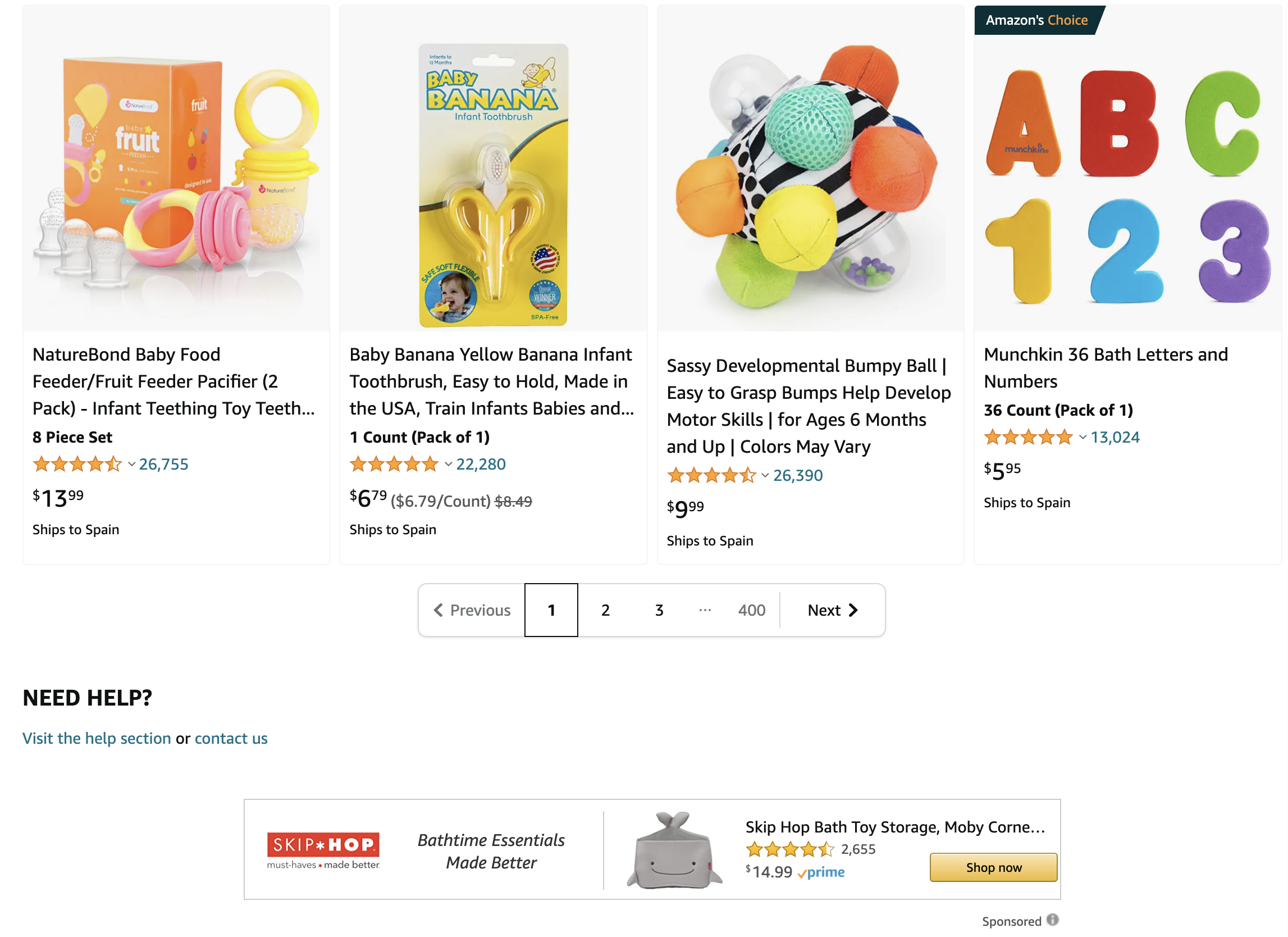
The Ultimate Guide to Your Amazon PPC Strategy
Last update: 20 February 2024 at 02:38 pm
Successful PPC ads on Amazon can not only lead to higher sales, but also ensure more growth for your brand on the digital marketplace. However, this requires the right strategy to stand out from other merchants on the platform, optimize costs and place your product in the best possible way.
In this article, you will find all the know-how you need to start a successful PPC campaign on Amazon, either by yourself or with your Amazon PPC agency.
What is Pay Per Click?
Amazon’s Pay Per Click advertising model allows sellers on the platform to purchase greater visibility for their products in exchange for money. The price is calculated by the number of clicks the sponsored ads generate.
How much you pay per click on your ad depends on your pre-submitted bid. This is because, as with Google Ads, you can determine how much you are willing to pay per click. The higher your bid, the more likely you are to outbid potential competitors and be featured more prominently on the page.
So demand clearly determines supply with Amazon PPC: a niche product with little competition will have a cheaper Amazon PPC than more competitive products with many different sellers.
What Role Does Amazon PPC Play for Your Products?
Amazon has become one of the most important digital platforms in e-commerce worldwide. So if you want to reach a lot of potential customers quickly, you sell your products via Amazon.
However, the popularity of the platform also means that sellers with their products quickly get lost in the mass of offerings: At the end of 2016, around 25.1 million products were listed in the “Kitchen and Household” category alone.

The ads that are ideally tailored to Amazon in terms of content are displayed at the top. This optimization, also called Amazon SEO, can help you to be placed at the top of the search results.
Optimizing ads with the right images and text for Amazon is no longer a secret, but rather part of the basic sales strategy that sellers pursue on Amazon.
That’s why you should not underestimate the possibilities that PPC advertising can offer you. Through this advertising model, you have the chance to either catapult new products directly into the upper ranks of the search display at their launch or to additionally push goods that have been available for a longer period of time by running targeted advertising campaigns.
In this way, you can turn slow sellers into real sales hits – which in turn has a lasting positive effect on your organic ranking. An absolute win-win situation!
The Different Amazon Advertising Formats

There are three different PPC ads available on Amazon: Sponsored Products, Sponsored Brands, and Sponsored Display Ads.
Sponsored Products allow you to advertise your products. These ads are placed both in search on Amazon and on product pages of goods that are similar to the products you are promoting. Sponsored products are probably the most popular type of advertising on Amazon.
Sponsored Brands advertising is used to increase brand awareness. Using display ads above listed search results, you can actively promote your brand.
Sponsored Display Ads ultimately play product ads to potential buyers based on previously viewed Amazon Pages. Unlike Sponsored Products and Sponsored Brands, these ads are placed both on Amazon itself and on external websites.
What Strategy You Should Follow
Amazon gives advertisers many different ways to optimize and tailor their PPC ads to their unique sales strategy. A professional Amazon PPC agency can help you find the right strategy for your Amazon Ads.
Below are three approaches to Amazon PPC strategies that can help you increase your conversions and sales on the advertising platform.
|
Discover the most relevant agencies for your project based on your own specific requirements for free!
Find an agency now!Manual vs Automatic Amazon PPC Campaigns
When you or your PPC agency set Sponsored Product Ads or any other ad format through Amazon PPC, you can choose between manual or automatic Amazon PPC campaigns.
Automatic Ads use the information from your ads to define keywords and similar products and target your Amazon Ads accordingly. Your Amazon PPC campaigns are thus automatically targeted according to search terms that are both stored in your ad and used for similar products.
Automatic advertising is therefore particularly suitable for new products for which you do not yet have any or only very little data.
Alternatively, you can also opt for manual ad targeting. In this case, the choice of keywords for your Amazon Advertising is up to you.
Best Practice: Combine the campaigns
If you want to advertise a new product on Amazon, then a combination of the manual as well as automatic campaigns is recommended.
You will be shown relevant keywords via automatic ads. It is best to let these ads run for one to two weeks to get initial performance data.
Based on the information from the automatic Amazon PPC ads, you can now do keyword harvesting. This means that you transfer the keywords that bring you the most sales into a manual campaign.
Exclude the relevant keywords in the automatic ad to avoid duplicate costs, and gradually optimize the keywords in your manual ad over the coming weeks.
The following applies: If a keyword has not brought you any sales, you can safely delete it.
Make the Right Bids for Amazon Campaigns

You can define yourself on Amazon which bidding strategy you want to use. Amazon distinguishes between three bid types:
- Increase and decrease dynamic bids
- Dynamic bids only decrease
- Fixed bids
Dynamic bids, which are both raised and lowered, allowing Amazon to raise or lower a bid by up to 100% depending on performance. So, for example, if you set a bid of $5 but selected this bid option, Amazon can raise the ad up to $10 if it is performing well, or alternatively lower it down to $0 if the likelihood of purchase is too low.
The second bid option again only allows Amazon to adjust your campaigns downwards but not upwards. This is a rather conservative approach.
Finally, you also have the option to place a fixed bid. In this case, regardless of the actual performance of an ad, only the bid you set will be used.
Best Practice: Be aggressive – at least at the beginning
Of the advertising options mentioned, dynamic keyword bidding offers the most potential to increase sales. This is because this aggressive bidding method gives you all sorts of valuable metrics and information about which keyword is performing best.
Again, it’s best to use a combination of the above options for your campaigns: Gather input on dynamic bids raise and lower and use this information to then adjust your bidding strategy and bid more deliberately. This will not only help you increase your sales on the digital marketplace, but also minimize your costs.
Note: The Dynamic Bids option is only available for Sponsored Products campaigns.
Targeting Options
Amazon offers three different options for targeting your Amazon PPC campaigns:
- Keyword Targeting
- Product Targeting
- Views Remarketing
Keyword targeting is used to define keywords for which your ads should be played. You can also choose between the match types Broad, Phrase and Exact.
- Broad Match: The order of the keywords in search results is arbitrary.
- Phrase Match: Keywords must be present in the same order in the search results.
- Exact Match: word for word match of the specified keyword and the search term
Note: Keyword targeting is not available for Sponsored Display Ads.

Product targeting, on the other hand, does not refer to keywords, but to similar products that are listed on Amazon. Here you can differentiate between targeting in relation to an Amazon Standard Identification Number (ASIN) or a product category.
The last targeting option Views Remarketing is only selectable for Sponsored Display Ads. Here you can play your ads to potential buyers who have already viewed your product once in the past 30 days, but have not purchased it. These ads are played on Amazon itself, but also on external websites.
Best Practice: The goal determines the targeting
Which targeting option you choose for your Amazon ads depends on the goal of your campaign. Views remarketing is a good way to increase brand awareness and establish products in the minds of customers beyond Amazon.
Merchandise that is discovered through browsing rather than targeting can benefit from category targeting, whereas keyword targeting is a good place to start for new products.
The Role of ACoS for Your PPC Campaign
To measure the success of your Amazon PPC campaigns, there are many KPIs available. Probably the most interesting KPI among them is the Advertising Cost of Sales, or ACoS for short.
The ACoS shows you the ratio of your advertising spends on Amazon to the revenue generated by it. If the ACoS for your Amazon advertising is 15%, for example, this indicates that you have spent €0.15 on Amazon PPC ads for every euro of sales generated. The ACoS is crucial for optimizing your Amazon PPC campaigns and achieving a lower Amazon ACoS can significantly improve your advertising efficiency and profitability.
Here you can find a detailed article on the role and importance of ACoS for your Amazon PPC campaign.
Conclusion: Amazon PPC Offers Some Revenue Potential
The use of the Pay Per Click principle of Amazon advertising offers sellers of the platform the chance to place your products ideally and to address more customers through a constant optimization of the ads. At the same time, a successful advertising campaign on Amazon can positively influence the organic ranking of your products.
That’s why it’s definitely worth experimenting with Amazon’s PPC advertising options and generating more sales while optimizing the cost of advertising spend.







